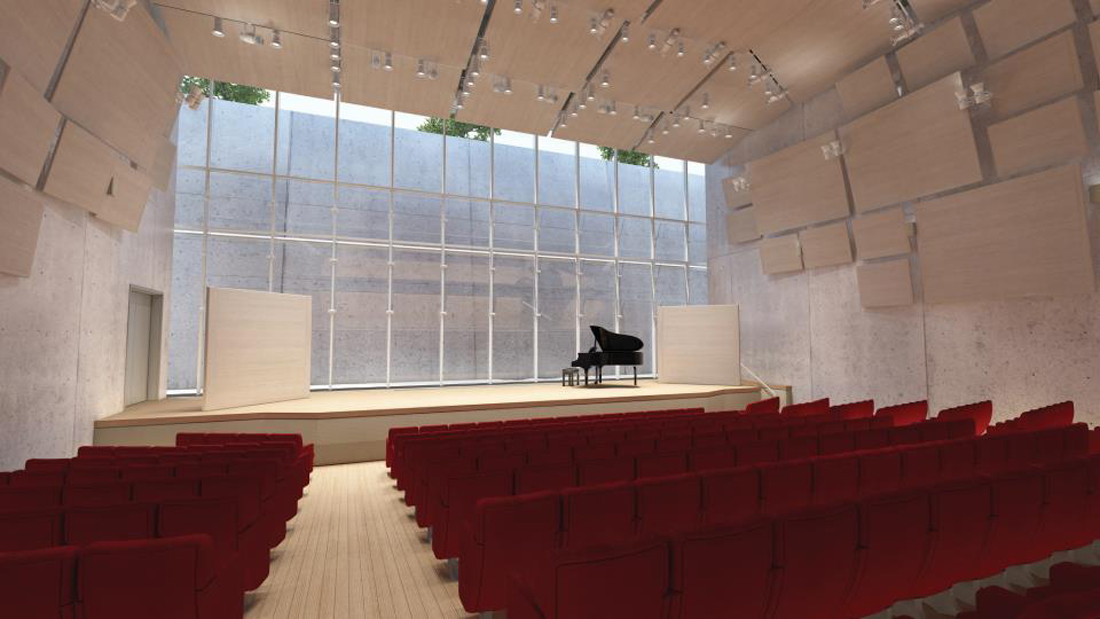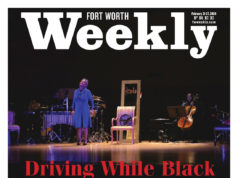The Cultural District has long been a source of great pride for Fort Worth, offering everything from Renoirs and Warhols to the annual Stock Show and Rodeo. But one thing has always been missing from the Westside area: a music hall.
Yes, there are places in the Cultural District for music performances –– Casa Mañana, W.E. Scott Theatre, Will Rogers Auditorium, and the facilities at the Kimbell Art Museum and Modern Art Museum of Fort Worth –– but all of them were built primarily for theatrical performances or lectures, not music. And there’s a difference. A music hall has to have the right acoustics, preferably good enough to accommodate the kinds of world-class music performances that normally take place at Bass Performance Hall downtown.
“Nothing has really been built for music per se, to my knowledge” in the Cultural District, said Darren Woods, general director of Fort Worth Opera. “The facility at the Modern is the best, but it is multipurpose [like the Kimbell’s facility] and poses the same challenges for staging full productions.”
Enter: the Piano Pavilion Performance Hall, designed by Pritzker Prize winner Renzo Piano as part of a $135 million expansion of the Kimbell that will add 16,200 square feet of gallery space, new educational rooms, and a larger library. The Piano Pavilion is expected to open near the end of this year.
Unlike the Cultural District’s existing performance spaces, all built with the goal of creating a short reverberation time to allow speech to be heard clearly, Piano’s performance hall will offer a long reverberation time, enveloping listeners in sound.
Installation of the hall’s self-described “superior acoustics” will be overseen by Harvey Marshall Berling Associates, noted for their work on similar stateside halls at places like Berkeley Carroll School and Columbia University. “The acoustical goals of the [Piano performance hall] are to create an optimal music recital space while at the same time addressing the very different acoustic requirements for other uses of the auditorium such as lectures and presentations,” said HMBA principal David Harvey.
The Piano performance hall will be ideal for small to mid-sized classical music groups and piano soloists, the kinds of artists who can’t pack the 2,056-seat Bass Hall and who, frankly, can no longer afford to rent it. “Bass Hall, which has increased its rental fees … is much too large for chamber or vocal music performance,” said John Forestner, president of the Chamber Music Society of Fort Worth.
The Piano performance hall will be available for rental and will seat 298. The 4,100-square-foot space will be folded into the Piano Pavilion, which will stand 75 yards to the west of the current Kimbell, Louis I. Kahn’s Modernist masterpiece. Unlike Kahn’s undulating beige monolith, the Piano Pavilion will be angular and glassy.
Piano’s design has presented HMBA with a particular set of challenges. “Glass is not typically an acoustician’s best friend,” Harvey said. “In this case, however, HMBA and Piano developed a design for articulating glass panels for the stage. They will improve the ability of musicians to hear one another as well as provide an enhanced blend for the audience.”
The Piano Pavilion is being paid for by the Kimbell Art Foundation.
“Fort Worth is fortunate to have fantastic performing arts spaces like the Bass Hall and Casa Mañana, but we feel that the Kimbell’s new auditorium is unique in size and function,” said Kimbell director Eric Lee. “This new, larger space will allow us to continue to work with long-term partners such as the Van Cliburn Concert Series, Fort Worth Symphony Orchestra, and Fort Worth Opera while also providing availability to many other talented performing arts groups that are working in Fort Worth.”













Sign me up.